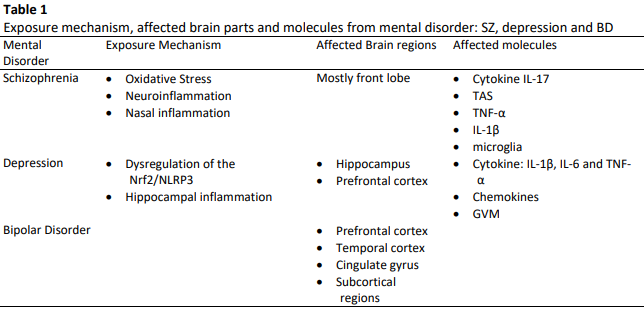Reviewing the Influence of PM2.5 on Mental Health among Workers in Various Industries: Examining Schizophrenia, Depression and Bipolar Disorder
DOI:
https://doi.org/10.37934/ard.123.1.146157Keywords:
PM2.5, mental disorder, schizophrenia (SZ), depression, bipolar disorder (BD), workng environmentAbstract
Mental health is a crucial factor of maintaining a healthy life and optimizing the productivity in workplace. A significant number of individuals and workers in urban areas are consistently exposed to PM2.5, which comprises diverse properties and chemical compounds, its composition varying based on its source. These particulates can be inhaled or ingested reaching different organs within the human body through the respiratory system and blood stream. PM2.5 has the potential to inflict harms on various body systems, including the respiratory, cardiovascular, reproductive and central nervous systems. High exposure to PM2.5 was correlated with developing symptoms of many mental disorders which can be life threatening. Each disorder arises due to the impact of PM2.5 on distinct regions of the brain, leading to alterations in its structure and affecting its functionality. A comprehensive review explores the influence of PM2.5 on mental health, aiming to gain a deeper understanding of potential contributors to behavioural disorders among workers worldwide at their workplaces from 2018 to 2023. Despite extensive studies on job-related factors and fatigue contributing to workers' behavioural disorders, minimal research directly addresses the impact of PM2.5 on the mental well-being of individuals across various industries. This oversight is significant, considering that these pollutants may contribute to severe human errors in the workplace.
Downloads























